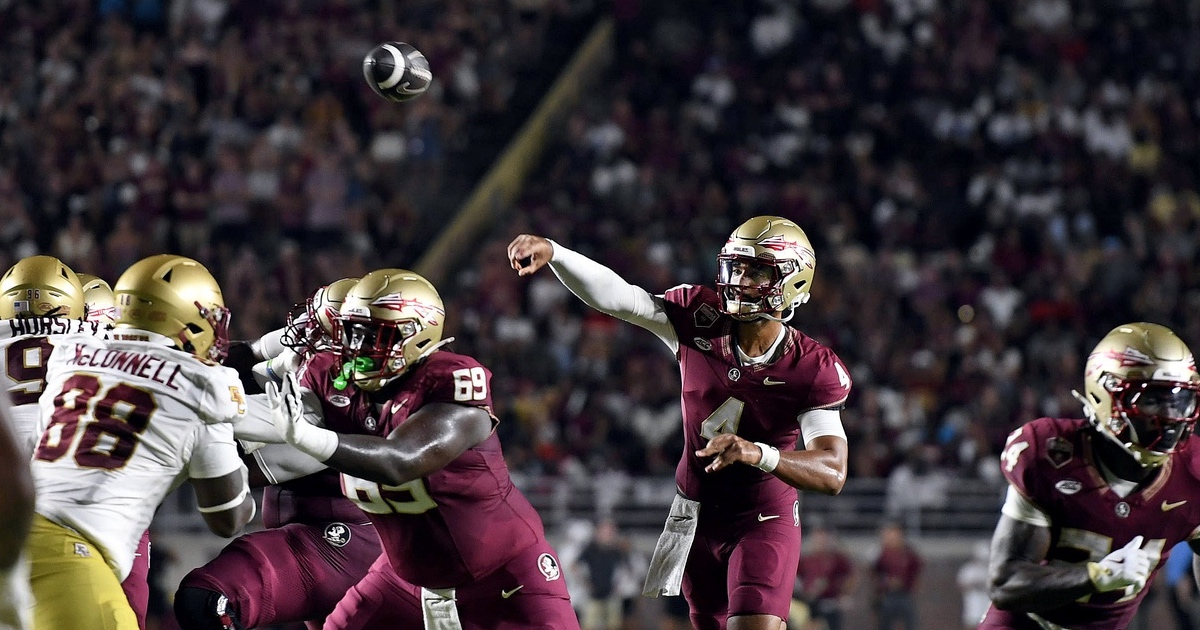Veteran physician and AHSAA medical director James Robinson said this week that while it is unusual for Alabama to have two football-related deaths so early in a season, football remains a safe sport.
On Monday, family and friends in Selma were still mourning the death of 16-year-old Morgan Academy student Caden Tellier, who died Saturday from complications from a severe brain injury sustained during Friday’s Alabama Independent School Association game.
Earlier this month, 14-year-old freshman Semaj Wilkins of New Brockton died after collapsing during a midweek practice. Coffee County Coroner Arnold Woodham told AL.com on Monday that he is still awaiting the final autopsy report on Wilkins, who played in the Alabama High School Athletic Association.
There have been at least five football-related deaths nationwide this summer. Robinson, who is also retired head physician for the University of Alabama team and current medical director for the AHSAA, answered six questions from AL.com this week about the safety of the sport, protocols specific to students in the AHSAA (the AISA is a separate organization) and what he would say to parents who may be deciding whether their children can play football.
AL.com: Quite simply, is football still a safe sport? Why or why not?
Robinson: “Yes, football is still safe. If you look at the data from the National Center for Catastrophic Sport Injury Research, you’ll see that the death rates remain at a pretty stable level. In 2023, there were 16 deaths at all levels. Ten of those were medically related, three were traumatic and three were non-football related or unknown. At the high school level, four were medically related and three were related to traumatic head injuries. And that’s out of 4.2 million participants at all levels. While in Alabama we had one death from a traumatic head injury and what appears to be one medical death, I don’t know the numbers for the rest of the country. It’s unusual to have two deaths this early.”
AL.com: What is the protocol in the AHSAA before a student is allowed to play as an athlete/football player in general?
Robinson: “In order for a student to play sports for an AHSAA facility in the state of Alabama, he/she must complete an annual pre-participation physical exam signed by a physician or DO. However, nurse practitioners may also perform these exams as long as they are signed by their cooperating physician. They and their parents/guardians must also sign consent forms, including forms acknowledging the signs and symptoms of concussion and sudden cardiac arrest.”
AL.com: If football didn’t exist yet and it was proposed now, would it happen? In other words, would we create the sport?
Robinson: “Personally, I believe that football is here to stay. Every year, the organizations that sponsor football try to make the sport safer through rule changes and equipment modifications.”
AL.com: What steps does the AHSAA take if an injury occurs on the field or during practice?
Robinson: “The AHSAA requires every coach to be trained in CPR and defibrillator use and to be re-certified every two years. This is a law (Tyrell Spencer Act 2023-235) that was passed last year and takes effect this school year, but has been an AHSAA requirement for years. It also requires that each school have a venue-specific emergency plan that must be reviewed annually and signed by the principal and athletic director. It is also mandatory for every school to have a defibrillator available on campus within 3 minutes of every event. All coaches are trained in CPR, defibrillator use, heat illness, concussion and sudden cardiac arrest, and there is a lot of medical information on the AHSAA website. The AHSAA has also implemented a “medical time out” that must be done before every competition. This is where the coaches, medical staff, rescue personnel and officials involved meet to discuss the emergency plan, injury response protocols, location of medical equipment including the AED and location of the nearest medical facility and other relevant medical information.”
AL.com: What would you say to parents about football safety when deciding whether or not to let their children play?
Robinson: “I would tell them that all sports have risks, especially heart disease. Football is unique in terms of traumatic injuries, but there are similar risks in other sports (wrestling, soccer, cheerleading, gymnastics). I would make sure parents understand the risks, know the signs and symptoms of these serious conditions, and tell them that they should get a thorough physical from a doctor who is knowledgeable about sports-related illnesses and injuries before participating, not just get a piece of paper signed. Probably the most important thing I would tell them is to make sure there is a licensed athletic trainer at their school. Not all schools have one, and they have been proven to reduce injuries and respond properly to serious conditions. It is not mandatory to have one, but every school and athletic department should do everything they can to get one for their school.”





